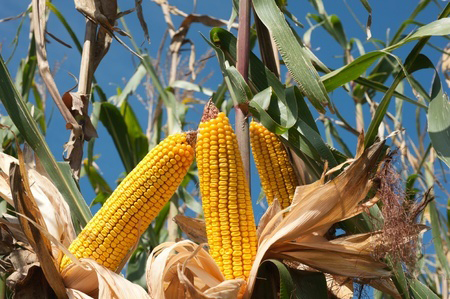NEDA looks into plan to reduce corn tariff to aid in livestock production

INQUIRER stock photo
MANILA, Philippines — The economic team is now studying proposals to slash tariff duties on yellow corn imports if this could help in a steady supply of the commodity used as animal feeds and to ensure relief in the ongoing corn shortage.
The National Economic and Development Authority (NEDA) is now studying the matter after the Department of Agriculture (DA) commenced a review of such a plan.
“This is something that we are looking at since corn is around 50 percent of the production cost of livestock and poultry,” Socioeconomic Planning Secretary Karl Chua said, adding that corn serves as feed for hogs and poultry and it comprises the highest cost in livestock production at around 70 percent.
The Philippine Maize Federation Inc., the country’s biggest association of corn farmers, earlier admitted that there is not enough corn supply for the demands of the livestock sector.
Similarly, the National Federation of Hog Farmers revealed the same situation. But, the two groups lamented the government’s lackluster response to the plight of corn farmers as a significant factor in the poor production of the commodity.
Right now Farmgate prices are at a high of P19 and retail prices are as high as P23.
In his keynote speech during the opening program of the 7th Annual Public Policy Conference (APPC) in September, Chua emphasized the significance of the agriculture sector in the country’s development story.
Recently, Chua had a meeting with Agriculture undersecretary for policy and planning Fermin Adriano to discuss the plan which has already been met by opposing reactions from stakeholders.
Adriano clarified that the meeting was meant to cross validate corn statistics for the DA’s ongoing study. He added that NEDA’s review is on top of the ongoing technical working group started by the DA.
Adriano said being the oversight agency, NEDA will also conduct such analysis but NEDA’s study will also depend on inputs from DA because of the department’s ground presence. NEDA relies mostly on Philippine Statistics Authority data which come out delayed.
Government agencies are trying to provide a win-win solution to the problem while ensuring that the entire value chain will not be severely affected.
It was in August when the DA came up with a TWG to study possible reforms in the tariffs of imported yellow corn. Corn growers and poultry stakeholders are opposing such a move but feed millers and some hog raisers are pushing for the reduction.
Hog raisers earlier raised concern over the executive order issued by President Rodrigo Duterte which increased the minimum access volume and decreased tariffs for imported pork. They lamented tariff distortion as tariffs on agricultural inputs remained high.
The DA study on the tariff cut is still ongoing as calculation on the demand side, for both poultry and livestock, as well as the production estimates for corn, have yet to be completed.
He said the TWG is also computing several output depending on how much reduction in tariffs will be made. Currently, corn imports are levied 35 percent within the MAV, 50 percent outside of the MAV, and five percent within ATIGA.
As to when decisions will be certain, Adriano said the DA will be forced to act if it has become a crisis situation.
“I think because of the need to address its impact and if it has come to a point where it will be contributing to high inflation. We need to protect the welfare of the consumers because they are the majority of our people,” Adriano said.
Last August, consumer prices for the country’s poorest households further accelerated as inflation for the bottom 30 percent income households hit 5.2 percent.
Faster growth was seen in the index of food and non-alcoholic beverages, particularly vegetables, fish and corn.
“But even as you contemplate on the lowering of tariffs, we have to think of what will be the social protection to our farmers. Our problem is really on the safety nets that we will provide,” he said.
DA corn program head Milo Delos Reyes, who is also part of the TWG, said the DA is hoping to come up with a decision before the year ends, especially as the balancing act among the sectors needs to be prioritized.
In terms of corn production for the year, target output is at 8.7 million metric tons. Of that, 6.4 million MT will be yellow corn.
However, with the economy set to reopen and with producers pressured to bring down costs, there is still an anticipated shortfall of 5 million metric tons of yellow corn for feeds.
RELATED STORY:
DA official defends special order on corn tariff amid farmers’ clamor